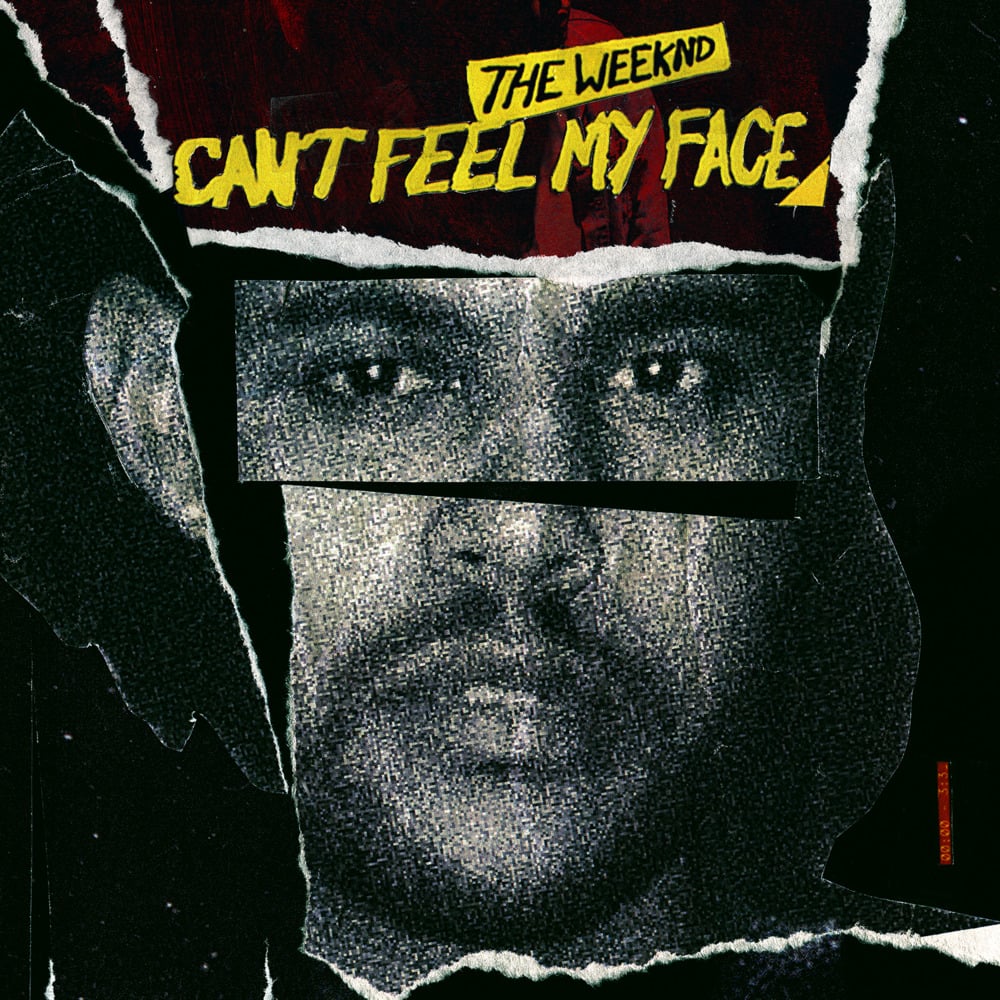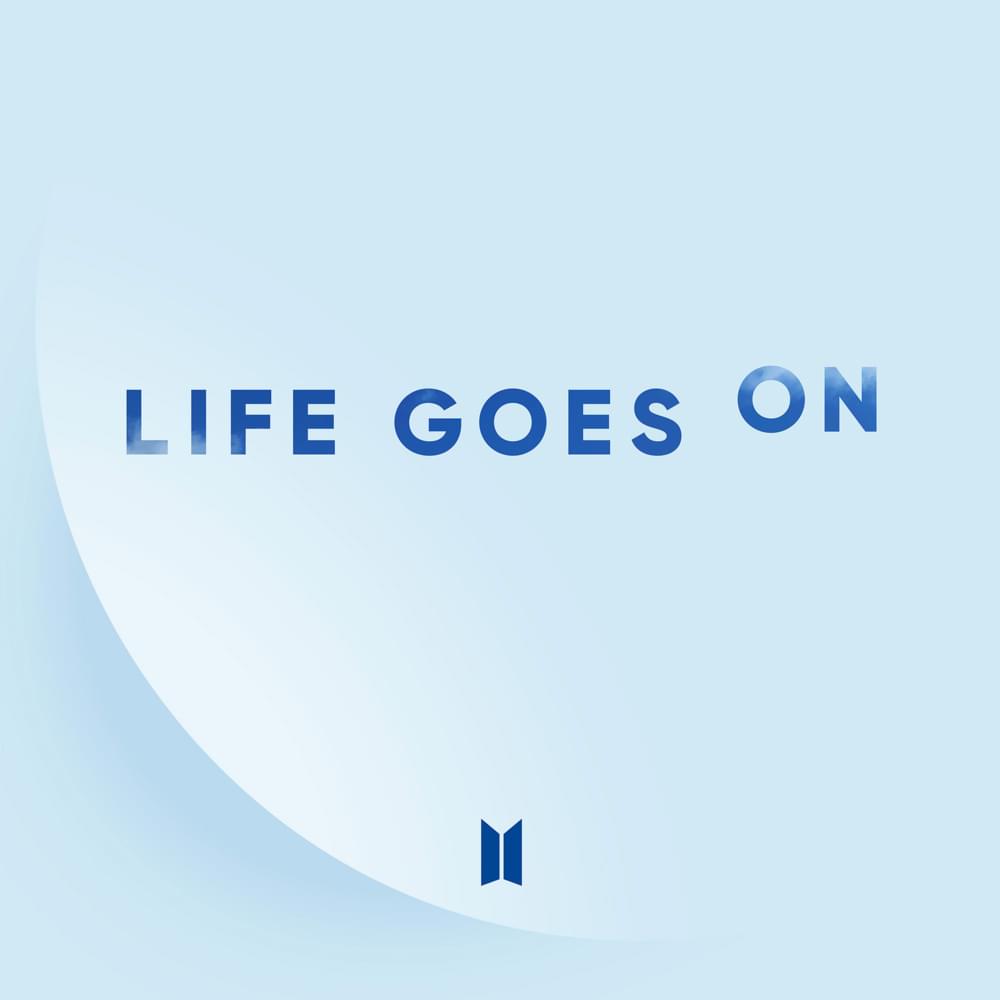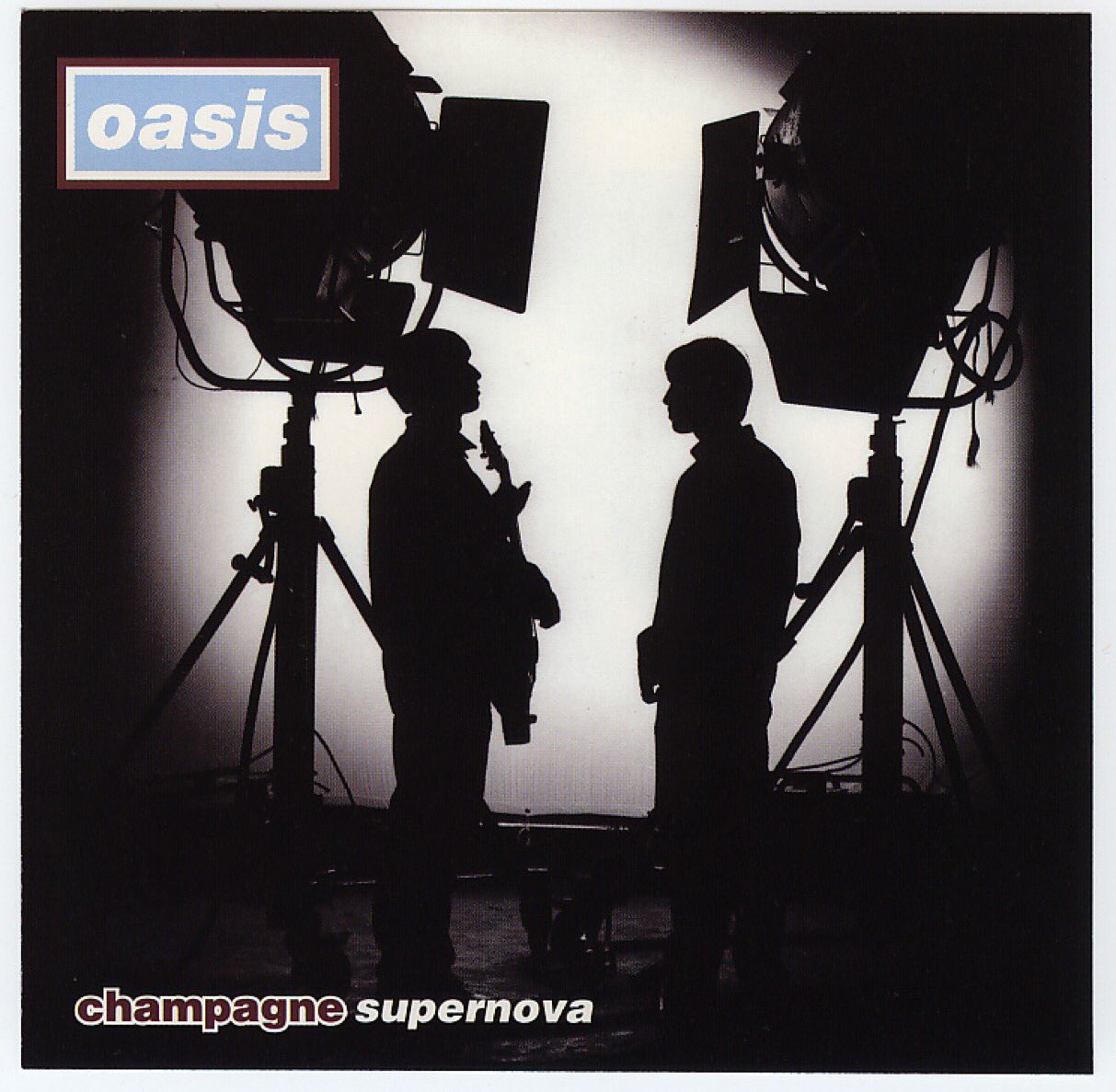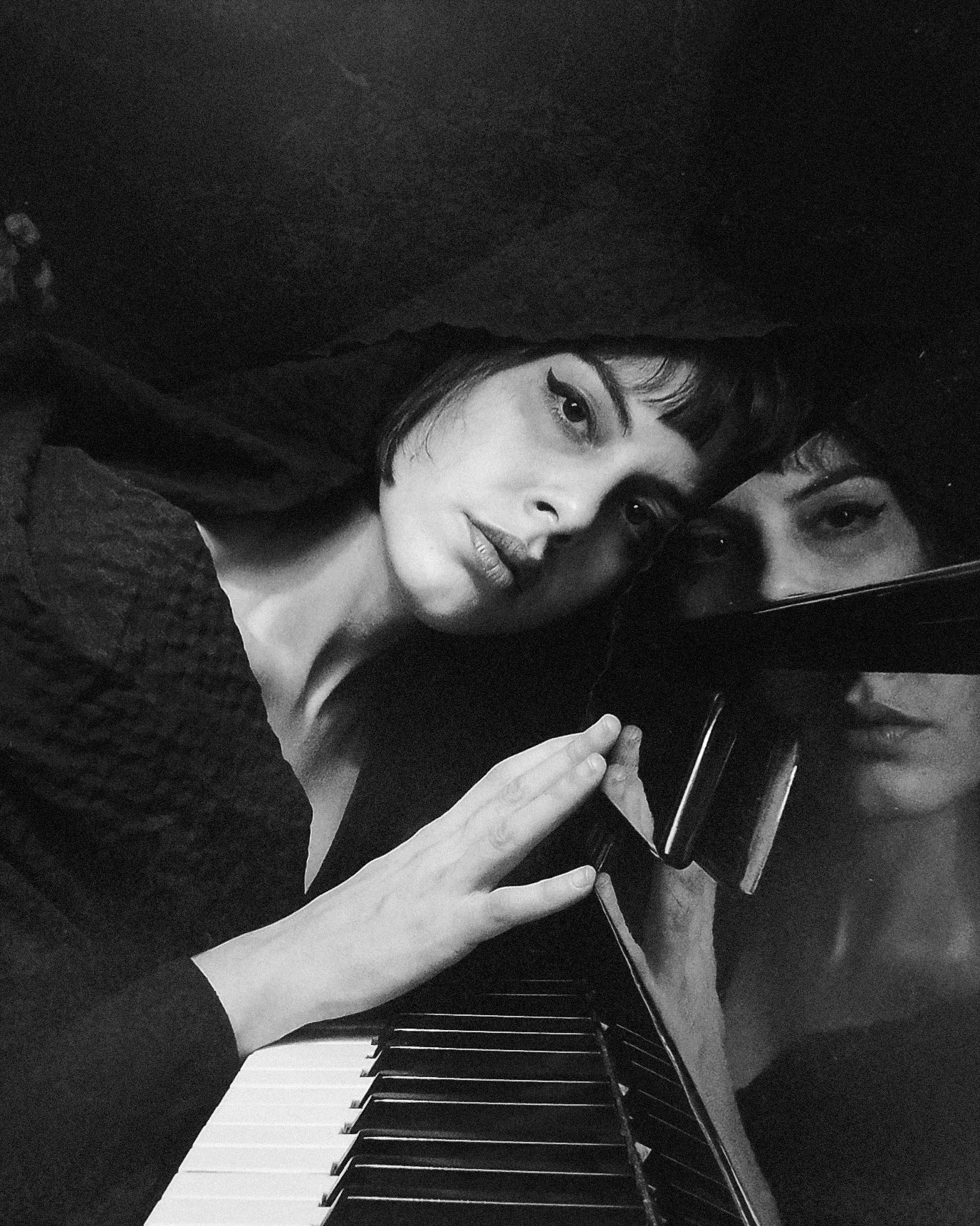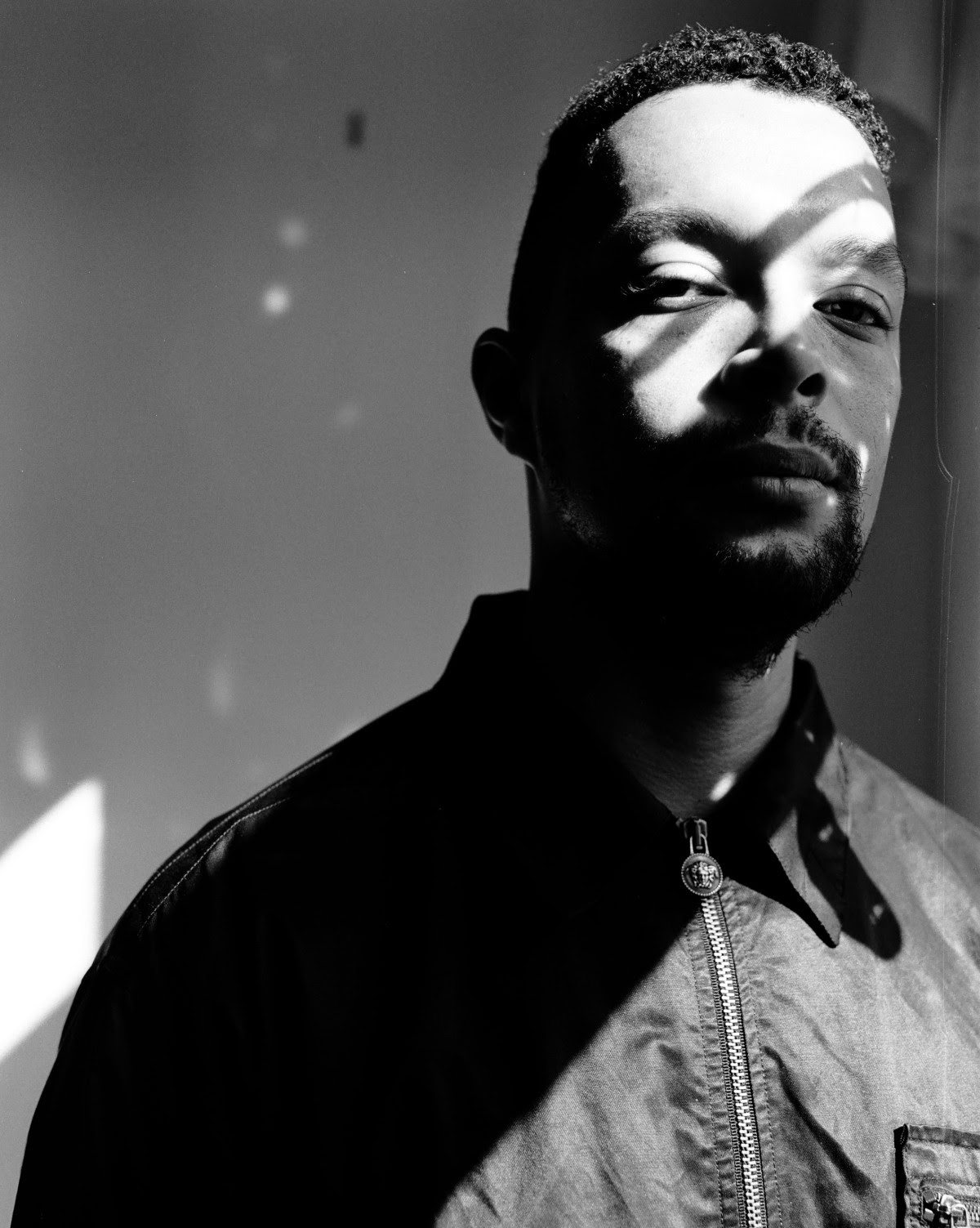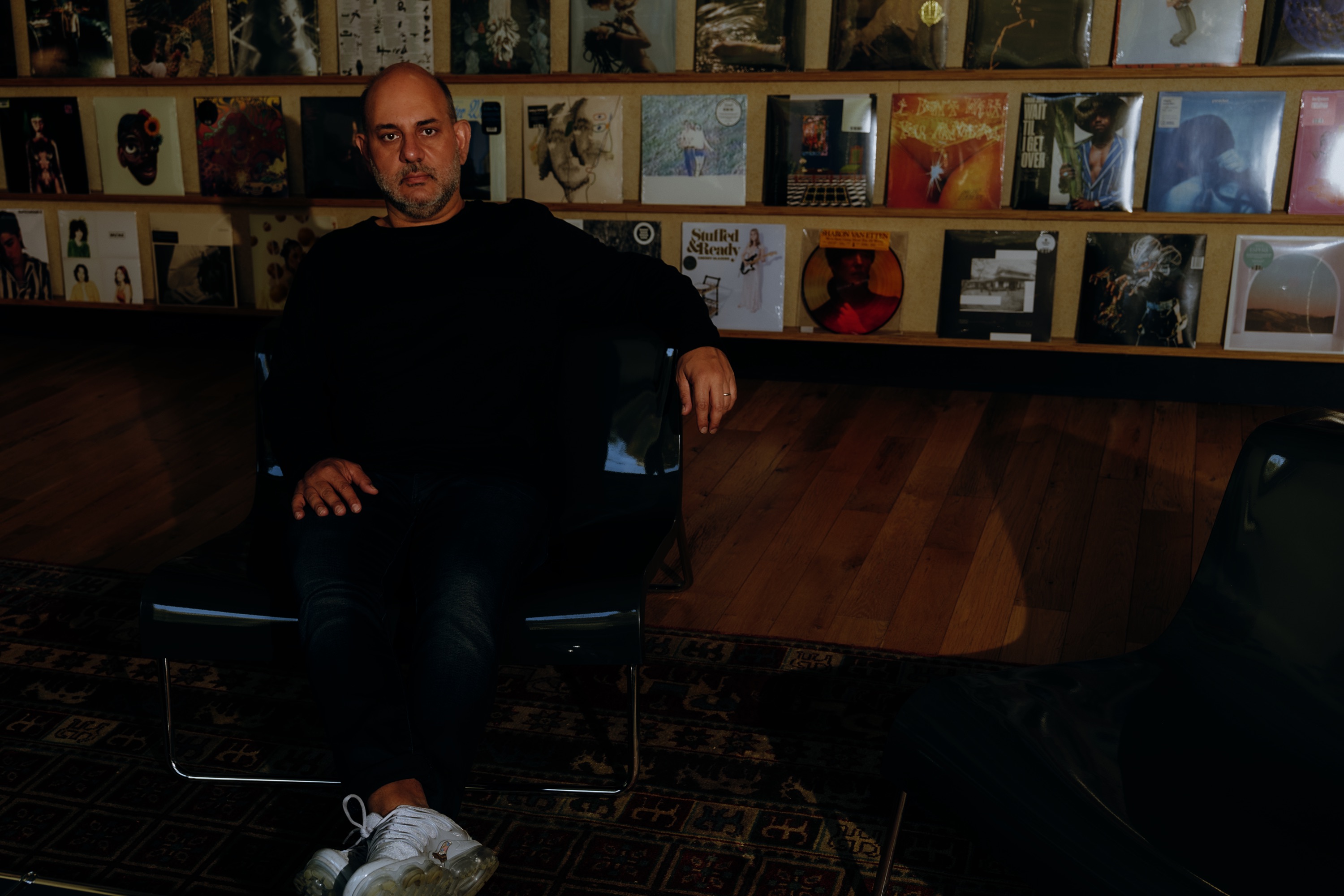August 22, 2015
- STAYED AT #1:3 Weeks
In The Number Ones, I'm reviewing every single #1 single in the history of the Billboard Hot 100, starting with the chart's beginning, in 1958, and working my way up into the present. Book Bonus Beat: The Number Ones: Twenty Chart-Topping Hits That Reveal the History of Pop Music.
At some point during his vertiginous 2015 ascent, Abel Tesfaye found himself sitting next to 82-year-old Quincy Jones at a Las Vegas nightclub. Tesfaye, known to most of us as the Weeknd, was appropriately starstruck, and he couldn't believe that Jones knew who he was. Remembering that moment, Tesfaye told The New York Times, "You couldn’t wipe the smile off my face." Quincy Jones asked Tesfaye about a "more uptempo song" that he'd been hearing: "I used to make music like that. Sounds good." Yeah. No shit.
By "make music like that," Quincy Jones meant that he produced Off The Wall and Thriller and Bad. In their work together, Michael Jackson and Quincy Jones developed a form of all-encompassing, dancefloor-ready pop music that could still be big and bold and hard and angular and dark and antagonistic and ugly. A song like "Billie Jean" stands as one of the greatest, most instantly recognizable pop songs in history, and it's also a freaked-out psychodrama about a guy who won't admit his own fatherhood. The song's darkness does not contradict its reach. Instead, the darkness makes the track thicker and sexier -- more arresting, hypnotic, powerful. The Weeknd learned a lot from that.
In 2015, Abel Tesfaye was working to make himself, in his own words, the biggest in the world. This was a tall order. Just a few years earlier, the Weeknd had been a purely online cult sensation, his music defined as much by its mysterious anonymity as its intoxicating blend of genres. Nobody knew Abel Tesfaye's real name or how he looked. We didn't know whether the Weeknd was a person or a band. We didn't know whether you pronounced the name as "Weekend" or "Weakened." As magnetic as his music was, it didn't sound anything like pop, even after he signed to a major label and released a proper album. But Michael Jackson, an early inspiration who the Weeknd covered on one of his mixtapes, served as an example for how this kind of dark, tangled, blurry music could scale up to stadium status.
The Weeknd pulled it off. When he brought one of the tracks from his second major-label album to his publisher, the Songs Music Publishing head Ron Perry said, "It's 'Billie Jean'! It's 'Billie Fucking Jean'!" (That's as reported in the aforementioned Times profile.) Amazingly enough, the song that Perry mentioned wasn't the one that Quincy Jones himself asked about. The Weeknd had Michael Jackson songs on deck. By figuring out how to artfully sell out, the Weeknd really did become the biggest in the world, at least where streaming metrics are concerned. Taylor Swift is the actual biggest artist in the world, but the Weeknd's pure Spotify numbers are right up there with hers.
The Weeknd's transition to pop stardom was the result of an intricate, precise plan, and it didn't happen all at once. But the song that really pushed him over the top -- the one that attracted Quincy Jones' attention -- was an anxiety-riddled ode to cocaine that went on to score a Nickelodeon Kids' Choice nomination. When that song hit, the Weeknd truly learned something that Quincy Jones already knew: When the circumstances line up and the music moves just right, nothing is too dark to catch fire.
Global pop stardom wasn't exactly a likely outcome for the Weeknd. In my early 20s, I knew plenty of people who lived like Abel Tesfaye. None of them became global pop stars. I don't know where most of those people are now, but I'm guessing they're still working service-industry jobs and getting thrown out of parties on their off-nights. (This is not a diss. I had great times with those people, and I still have great times with them whenever I see them, though I have a harder time getting up the next morning.)
Abel Makkonen Tesfaye, the son of Ethiopian immigrants, was born in Toronto, and he grew up in the suburb of Scarborough. (When the Weeknd was born, Paula Abdul and the Wild Pair's "Opposites Attract" was the #1 song in America. In Canada, it was Rod Stewart's version of Tom Waits' "Downtown Train.") Tesfaye's father wasn't in the picture, and he grew up in a tiny apartment with his mother and grandmother, speaking Amharic at home.
At 17, Abel Tesfaye and his best friend/current business partner La Mar Taylor dropped out of high school and moved to Toronto proper, where they spent years partying hard. Tesfaye became a regular on the city's hipster club scene. He sold a little weed but mostly lived on welfare. When he and Taylor got kicked out of their apartment, Tesfaye drifted from one girlfriend to the next, largely as a way to ensure he'd keep a roof over his head. You've known guys like that, right? That is a type of guy. Eventually, Tesfaye got a job at American Apparel, the store where that type of guy inevitably ended up working in the mid-'00s.
Eventually, Abel Tesfaye started making music. He tried out different names and roles, joining a rap group called Bulletz N Nerdz and a production team called the Noise. He started out under the name Kin Kaine and changed it to the Weeknd after meeting Jeremy Rose, a producer who encouraged him to move toward gooey, ominous R&B. For a quick instant, the Weeknd was a collaboration from Abel Tesfaye and Jeremy Rose. Those two fell out immediately, but a few of the tracks that they made together, posted anonymously online, started to catch people's attention.
In his early music as the Weeknd, Abel Tesfaye sounded like both predator and prey. His voice was soft and delicate and strikingly pretty, but the lyrics were about existing in a permanent fucked-out drug haze. He could be cold and emotionless one moment, lost and lovelorn the next. His character treated women like garbage but still longed for them -- a vulnerable little kid and sketchy-ass operator existing together in the same skin. Tesfaye continued to develop that sound and persona as he met the producers Illangelo and Doc McKinney and worked on his debut mixtape House Of Balloons.
House Of Balloons, released as an impeccably graphic-designed free download in March 2011, was a huge deal, at least in my corner of the internet. I was working at Pitchfork when House Of Balloons dropped, and the whole staff was utterly mesmerized. In an early social-media age where constant self-disclosure was the new normal, the Weeknd stood out by withholding everything. There was no information about who this was -- no pictures, no interviews, no point of contact. The blockade lasted just long enough to intrigue people. The tape's lyrics were stark, the songs gorgeous, and the package looked undeniably cool. The singer's lothario lyrics could be loathsome, but that only made them more compelling. The music also sent out critic-bait signals, sampling a pan-generational cross-section of hipster makeout music: Siouxsie And The Banshees, the Cocteau Twins, Aaliyah, Beach House. It was too fucking cool. We were helpless.
House Of Balloons existed in the context of all in which it lived and what came before it. Across the internet landscape, other singers were experimenting with the '90s R&B sounds they'd grown up on, juicing that music with auteurist vision and references to cool-kid indie music. Often, the singers maintained their own internet mystique, keeping themselves nearly as elusive as Abel Tesfaye. Those artists didn't have too much in common. You couldn't really confuse the Weeknd with Frank Ocean or How To Dress Well or Miguel, but their simultaneous emergence was a real moment. The music writer Eric Harvey, a friend of mine, coined the term PBR&B as a Twitter joke, and it caught on enough that he used it as the basis for a piece on the shifting nature of genre two years later.
Critics and bloggers went nuts for House Of Balloons, and Drake, a rising Toronto rap star with a critic/blogger sensibility, got on board, endorsing the tape on his OVO website. The Weeknd gave his first live show at Toronto's Mod Club just as the tape was buzzing, and he looked as pretty and as interesting as the music promised. Major labels hovered. By year's end, Tesfaye released two more free-download mixtapes, Thursday and Echoes Of Silence, that sounded pretty much the same. Drake, someone who will be in this column many times, jumped into the mix, rapping on the Thursday song "The Zone" and appearing in the video.
Echoes Of Silence, the third and last of the Weeknd's mixtapes, came out at the end of 2011. So did Drake's sophomore album Take Care, which went deep into the Weeknd's spaced-out horny-depressive zone. Tesfaye co-wrote five songs from Take Care, and he sang on one of them, the excellent "Crew Love." ("Crew Love," never a proper single, peaked at #80.) Drake has made a lot of very good music since Take Care, but that album remains his best by far. Maybe it's not a coincidence that it's the one Drake album where the Weeknd was heavily involved.
The story, at least as I always heard it, is that Drake wanted badly to sign the Weeknd to his OVO label. The Weeknd refused. He'd founded his own XO label, and he wanted to find a major deal for that instead. That decision led to a lasting rift between Drake and the Weeknd. For years, they alternated between subliminal jabs and shows of unity until this year, when the Weeknd became an important side character in the Drake/Kendrick Lamar feud. We'll get to that episode in future columns. Point is: The Weeknd was a rising star, and people wanted to get involved.
You can get the general vibe of the Weeknd's rise in the great 2019 movie Uncut Gems. The film takes place in spring 2012, and it's got the Weeknd playing a younger version of himself, doing the things that you'd imagine he would do. In his brief appearance, the Weeknd says he won't perform until someone turns on a black light, attempts a coked-out bathroom-stall hookup with Julia Fox, and gets into an incoherent nighclub brawl with Adam Sandler -- all things that you can picture Abel Tesfaye doing in real life. (I don't know if I'm talking about the characters played by Julia Fox and Adam Sandler or the real actors. Both seem plausible.)
While all that attention swirled, the Weeknd played festivals and signed with Republic, which made the XO label into a subsidiary. Later that year, Republic released a repackaged version of the three mixtapes as Trilogy. Republic pushed the House Of Balloons track "Wicked Games," and it peaked at #53 early in 2013. A few months later, the Weeknd released Kiss Land, his first major-label album. It got him into bigger venues and sold well enough to debut at #2. But the album mostly sounded like a bigger-budget version of those three mixtapes, and the novelty was wearing off. The reviews were more tepid than those for the tapes, and the biggest news story I remember from the rollout was Portishead getting pissed off about an uncleared sample. None of the singles charted. Abel Tesfaye paid attention to all of this, and he figured out a different approach.
After Kiss Land did less than the Weeknd wanted, he went to see Wendy Goldstein, Republic's head of urban A&R, and they hatched a plan to get him on track to being the biggest in the world. The first step was to work with an established pop star. At the time, the Weeknd's Republic labelmate Ariana Grande was transitioning from teenage pop-princess status to something more grown-up. In 2014, she and the Weeknd released their duet "Love Me Harder," a sticky pop song that wants you to know it's all about rough sex. To make a song like that, Ariana Grande had to get dirtier, and the Weeknd had to clean up. The dynamic worked beautifully, and it became the Weeknd's first real hit, peaking at #7. (It's an 8.) Over the years, Ariana Grande and the Weeknd kept making music. We'll see more of them in this column, both separately and together.
One of the writers of "Love Me Harder" was Max Martin, the Swedish mastermind whose work will just keep appearing in this column, again and again. This was the Weeknd's first time working with a mega-successful pop songwriter, and he didn't like the lyrics that Martin wrote for him to sing, so he rewrote them. Martin is extremely precise about his melodic impact of his lyrics, which can lead to some real linguistic pretzels. For years, he dominated pop by turning singers into vessels for his melodies, and that worked for a long time. But when the Weeknd rewrote his "Love Me Harder" lyrics, Martin kept the changes intact. That was a big deal. By adjusting his own style to fit with people like Taylor Swift and the Weeknd, songwriters with their own immutable styles, Martin probably bought himself another generation of pop-chart relevance.
The Max Martin experiment worked. The Weeknd learned that he could play the pop game and make an actual hit without contradicting his shadowy on-record persona. If anything, the visceral throb of centrist dance-pop added a new layer to his sound. The Weeknd branched out further when he recorded "Earned It" for the soundtrack of the first Fifty Shades Of Grey film. A horny mainstream movie was pretty much the perfect vehicle for the Weeknd to prove that he could sing an orchestral movie ballad while still sounding like a depraved, wounded dirtbag. "Earned It" hit ever harder than "Love Me Harder," going all the way to #3. (It's a 6.)
I saw the Weeknd play Coachella in 2015, just as "Love Me Harder" and "Earned It" were percolating, and there was a lot of excitement around the guy. The night that the Weeknd performed, Jack White was booked to headline the main stage, but the Weeknd was the de facto headliner, the one who actually closed that stage out. While he was onstage, I wandered around to the different tents to watch, like, Swans and Drive Like Jehu, and nobody was there for those motherfuckers. Instead, vast throngs were focused on Abel Tesfaye. Later on, I kicked myself for going to see some noisy bands when I should've paid more attention to the person at the center of everything. I'm glad I got to see Drive Like Jehu that one time, but it was a sad scene in those giant, empty tents, and I could've been a more attentive witness to a cultural phenomenon taking shape.
During that stretch, the Weeknd was building up to the release of Beauty Behind The Madness, his second major-label album. A couple of early singles went for the old Weeknd sound, but they had a new sense of purpose. ("Often," the first of those early singles, peaked at #59. The second will appear in this column soon.) At the same time, the Weeknd was putting in more time with pop-music professionals. Beauty Behind The Madness had contributions from people like Kanye West, Lana Del Rey, and future Number Ones subject Ed Sheeran. Most crucially, it had more songs that the Weeknd made with Max Martin.
"Can't Feel My Face," the first of many #1 hits for the Weeknd, has a credit list full of pop-music masters. Max Martin co-produced the track with Ali Payami, an Iranian-born Swedish protégé. Abel Tesfaye, Max Martin, and Ali Payami all have writing credits on "Can't Feel My Face." So does Savan Kotecha, the song-factory pro who's already been in this column for working on Carrie Underwood's "Inside Your Heaven" and Maroon 5's "One More Night." The other co-writer is Peter Svensson, best known for his time as the guitarist and lead songwriter for '90s Swedish alt-pop greats the Cardigans. (The Cardigans never had a Hot 100 hit, but if "Lovefool" got a proper single release, it probably would've been in this column.) After the Cardigans broke up, Svensson eventually took to working in the pop system, helping out on tracks from people like Justin Bieber, One Direction, and Avril Lavigne.
All five "Can't Feel My Face" co-writers had already worked on "Love Me Harder." This was a proven team. Max Martin, Ali Payami, and Savan Kotecha have hits for days, but they might not be the first people I'd call for a dance-pop jam about cocaine desperation. (Peter Svensson, on the other hand, would at least get a second look.) But the Weeknd was figuring out how to transpose his songwriting voice into laser-guided ultra-pop, and you can hear that sense of excitement and discovery in "Can't Feel My Face." After resisting the lure of tight structures and major keys, the Weeknd played ball, and he figured out that he was good at it. On "Can't Feel My Face," it all comes together.
When "Can't Feel My Face" hit the internet, it felt genuinely transformative. If you'd been paying attention, you knew what to expect from a new Weeknd track, and this song flew in the face of all of that. He'd made plenty of hazy dirges, and he would make plenty more, but this was bright and funky and physical. It was clearly intended to recreate prime Michael Jackson's sense of stormy dancefloor catharsis, and it didn't pretend to be something other than pastiche. But nobody else was trying to make Michael Jackson records in 2015, and this song went straight to the sinister undercurrent of something like "Billie Jean," turning subtext into text.
"Can't Feel My Face" is about cocaine. The Weeknd never specifically mentions coke or any of its many nicknames on the track, but it gets its title from the sense of tingly numbness that you might get from snorting a rail. (If you'd never snorted a rail, you might also recognize it from I Can't Feel My Face, the mid-'00s collaborative mixtape that Lil Wayne and Juelz Santana promised but never delivered.) On the intro, as ominous drones build underneath Abel Tesfaye's angelic voice, he coos, "I know she'll be the death of me/ At least we'll both be numb/ But she'll always get the best of me/ The worst is yet to come." The "she" could be cocaine itself, or it could be an actual woman, one who's going through that soul-damaging party life right next to the narrator. The two interpretations aren't mutually exclusive. In any interpretation, hell is around the corner.
The construction of "Can't Feel My Face" is immaculate. It starts out with the dark moodiness that's always been the Weeknd's stock in trade. But when Abel Tesfaye's voice hits its upper register, the fingersnaps come in, and you can feel the shift coming. Then it arrives, with a whoop that sounds so much like Michael Jackson that it could only be intentional. The beat locks in, bringing a beautifully sleazy, strutting bassline with it. Suddenly, we're in Max Martin melodic-math territory, with funky guitar clicks and backup-singer counter-melodies arriving at the exact right moments. This time, though, there's a panicky edge to all of it. The song never settles. It's always just slightly ahead of itself, tumbling into the unknown.
In the dynamics of "Can't Feel My Face," I hear the highs and the lows of party life -- the wide-open possibilities of a nasty night out, the dangers that you might be too high to consider, the stark regret and confusion that'll eventually catch up to you. In a great 2015 video, the Weeknd's fellow Canadian musician Chilly Gonzales patiently explains all the little compositional tricks -- syncopation, hesitation, minor chords -- that allow "Can't Feel My Face" to function as an all-out pop banger while still dripping with anxiety. I don't understand how any of that stuff works, but I know the effect that it has on me. When party music can reflect the darkness that comes along with partying, even obliquely, it resonates that much more deeply. It feels realer.
"Can't Feel My Face" is pure pastiche, and it reaches so hard to evoke Michael Jackson that I can't help but ding it a little, since nothing else can be Michael Jackson. When it came out, the song felt retro, but it was also heady and exciting. You could hear "Can't Feel My Face" as a nervous, lithe dance track without understanding any of the drug references, and it would still go hard; hence the Kids' Choice nomination. But the real miracle is that the Weeknd was able to make a Kids' Choice-worthy banger without compromising the darkness that he never tried to hide.
The world was ready for something like "Can't Feel My Face." Taylor Swift's 1989 stoked an appetite for '80s-style blockbuster synthpop, and Mark Ronson and Bruno Mars' "Uptown Funk!" showed how well a precisely executed pure-pastiche single could do. That, combined with the Weeknd's growing and undeniable star mystique, was enough to push the song over the top. "Can't Feel My Face" leaked online in May 2015, and I would not be shocked to learn that the leak was intentional, that it was part of the rollout strategy. A few weeks later, the song came out, and the Weeknd performed it live for the first time at Apple's WWDC conference, which is weird to think about. It's not really tech-innovator music.
The "Can't Feel My Face" video built on the song's anxious feeling. It's an early collaboration between the Weeknd and Grant Singer, a director who'd mostly worked with scuzzy indie types like Ariel Pink and Sky Ferreira and who would later direct the 2023 Netflix thriller Reptile. In the clip, Abel Tesfaye performs for a disinterested crowd in a seedy, artfully lit nightclub. Everyone pointedly ignores him except his girlfriend, played by the supermodel Chanel Iman. Some people throw drinks. Eventually, one crazy-looking old guy -- LA punk-scene veteran Rick Wilder, who showed up in a bunch of Singer-directed videos -- tosses a lighter at the Weeknd, and he becomes a singing, dancing fireball. Suddenly, the crowd loves him.
That's a pretty obvious visual metaphor for the perilous appeal of fame, which lines up neatly with the cocaine that animates the song itself. But this kind of dank, sinister energy had been missing from mainstream pop for years, and it comes roaring back with that clip. When presented in the right light, even the greasy, ugly decadence of an Ariel Pink video could work as blockbuster entertainment. It was exciting.
"Can't Feel My Face" reached #1 a few days before the Beauty Behind The Madness album came out, and it quickly became inescapable -- a coldhearted party song for the last days of summer. The album debuted at #1 in the US, doing the streaming-era equivalent of selling more than 400,000 copies. Today, the "Can't Feel My Face" video has well over a billion views, and the single went diamond in 2022. It's one of many diamond singles for that guy, and you'll only have to wait a couple of weekends to see the Weeknd in this column again.
GRADE: 9/10
We rely on reader subscriptions to deliver articles like the one you're reading. Become a member and help support independent media!
BONUS BEATS: In July 2015, when "I Can't Feel My Face" was still rising the charts, Taylor Swift played LA's SoFi Stadium, and she brought out the Weeknd, her fellow Max Martin collaborator, as a surprise guest. Here's fan footage of the two of them singing "Can't Feel My Face" together:
(Taylor Swift has already been in this column a bunch of times, and she'll be back many more.)
BONUS BONUS BEATS: For whatever reason, Jimmy Fallon's Tonight Show kept using "Can't Feel My Face" for bits. Here's Tom Cruise, on the show to promote Mission: Impossible - Rogue Nation, doing a pretty slick "Can't Feel My Face" lip-sync in 2015:
(It brings me no joy to report that Jimmy Fallon's only Hot 100 hit, the will.i.am collab "Ew!," peaked at #26 in 2014.)
BONUS BONUS BONUS BEATS: Here's fan footage of Stevie Wonder, someone who's been in this column many times, singing an off-the-cuff "Can't Feel My Face" parody at a 2015 Central Park gig:
BONUS BONUS BONUS BONUS BEATS: Here's the cool piano-based version of "Can't Feel My Face" that Empress Of recorded in a 2015 SiriusXM session:
(Empress Of has never been the lead artist on a Hot 100 hit, but she guested on "Suncity," a Khalid track that reached #88 in 2018.)
BONUS BONUS BONUS BONUS BONUS BEATS: Here's former Number Ones artist Donny Osmond, in costume as the Peacock, singing "Can't Feel My Face" on a 2019 episode of The Masked Singer:
The Number Ones: Twenty Chart-Topping Hits That Reveal The History Of Pop Music is out now on paperback via Hachette Books. We both know you can't go without it. Buy it here.
